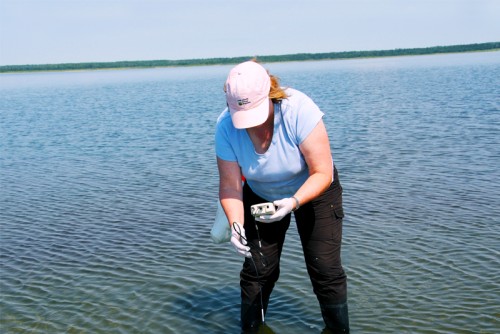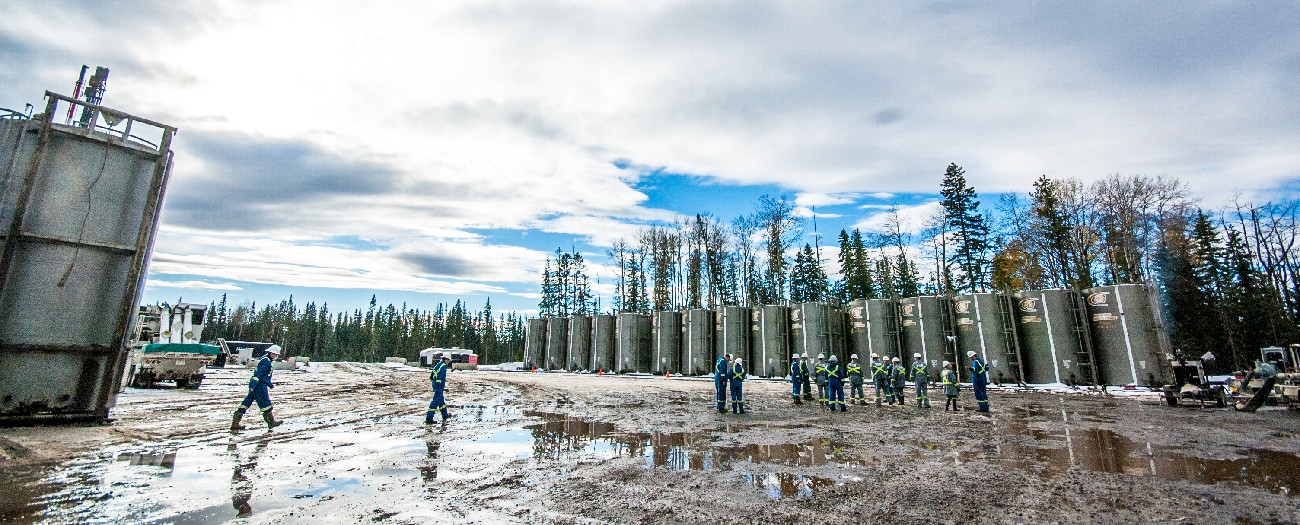AER report shows how the energy industry uses water
Alberta - July 16, 2017
You turn the tap on to cook a pot of spaghetti or run a hot shower, often without thinking about the amount of water you’ve just used. But if you tracked how much water you used every time you ran the tap, would you change your habits?
The AER is betting that energy companies will. That’s why we released the Alberta Energy Industry Water Use Report, which shows how much water is allocated and used to produce oil and gas from technologies such as hydraulic fracturing, enhanced oil recovery, oil sands mining, and in situ operations.
The Three “Rs”
Companies recycle large amounts of water once a project starts producing. This reduces the amount they need to withdraw from a lake, river, or runoff collection pond. In Alberta, every technology used to produce oil, gas, and oil from oil sands recycles water.
Enhanced oil recovery and in situ. In 2016, operations using both of these technologies recycled roughly 90 per cent of all water used because they operate on a cycle in which water and steam are continuously injected into the same wells.
Hydraulic fracturing. Hydraulic fracturing operations recycled about six per cent of all water used in 2016. It’s important to note that hydraulic fracturing fluid (which contains water) is only needed when a well is being drilled. To protect soil and groundwater, the AER has strict requirements that limit the amount of fluid operators can store on their sites. Usually, it’s disposed of deep underground in an AER-approved waste well, unless companies can either use this water right away to drill another well or provide it to another company operating nearby.
Oil sands mining. Oil sands mining companies are able to pull large amounts of water from tailings ponds to process oil sands, but they are not required to report the amount of tailings water used in its operations. As a result, this data is excluded and will be included in future versions of the report.
“Ultimately, we believe that public reporting on water use will also encourage companies to recycle more water and reduce the energy industry’s footprint on the environment,” said Shannon Chmelyk, manager of industry performance at the AER, who welcomed the challenge of leading the team that produces the water use report.
Use it wisely
Despite being one of Alberta’s biggest industries, oil and gas development accounts for a small part of the province’s water use. In 2016, the energy industry was allotted 10 per cent of all water made available for use from Alberta’s lakes, rivers, runoff collection ponds, and groundwater sources, but it used about a fifth of this allocation.
The remaining 90 per cent of water set aside for use was allocated to agriculture, forestry, commercial enterprises (e.g., golf courses, gravel pit operations), and municipalities.
Chmelyk noted that energy companies often use less water than the amount they request in their applications. For example, after the initial planning stages of a project, companies explore the project site to better understand where the oil, gas, or bitumen is and how much water they need to get these resources out of the ground.
Looking downstream
Future water-use reports will include recycling rates for oil sands mining along with company-specific information for each of the technologies in the report. And the AER will continue to hold companies accountable when they apply to use water.
“We’re going to use this report to review water applications with greater scrutiny and measure companies against their peers,” said Chmelyk. “We’ll challenge companies by asking them, 'Do you really need this much water, when company X developed a similar project in the area and used much less?'”
Jordan Fitzgerald, Writer


